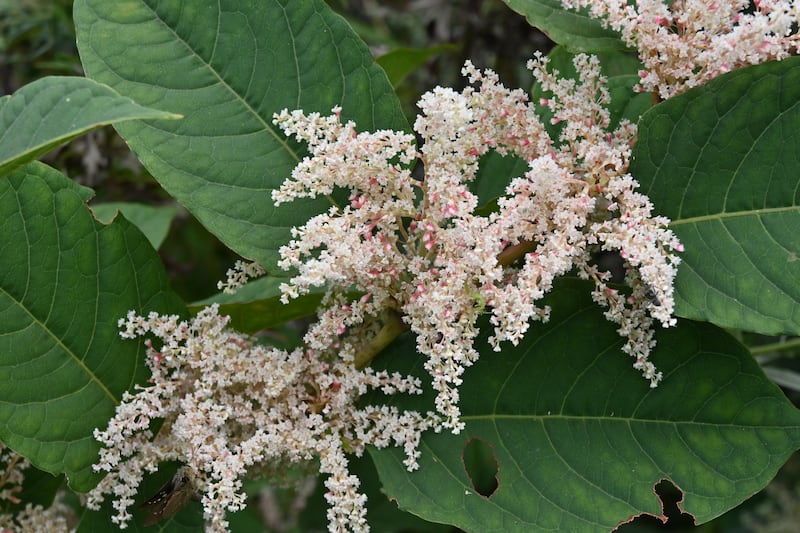Q: I think I might have vine weevils in my garden. Should I be worried? BF, Co Wicklow
A: Vine Weevils are a common pest in many Irish gardens, and signs of its damage including distinctive bite marks in the edges of leaves are caused by the adult beetle, and sudden wilting and death of plants are caused by the larvae eating fine plant roots and girdling the stems. It is the larvae that are the most destructive, their presence often only detected after they’ve caused significant damage.
Vine weevil is particularly problematic with container-grown plants or those growing in raised beds where the growing medium contains peat. In fact, the spread of this destructive garden pest through Irish gardens in recent decades is closely linked to the widespread use of the latter.
Certain species of plants are particularly vulnerable including strawberry (Fragaria); Primula; Polyanthus; Rhododendron; Bergenia; Hydrangea; Yew; Epimedium and evergreen kinds of Euonymus. While you’ll never permanently eradicate vine weevils from your garden, the combination of a number of effective controls will do a huge amount to manage them.
Reducing the number of egg-laying adults is the best way to reduce subsequent damage by their larvae, with every adult female capable of laying up to 500 eggs over the course of late spring and summer. The larvae, which are most active from autumn to early spring, are found in among the roots of afflicted plants and are easily identified by their plump, legless, creamy-white. C-shaped bodies and pale brown heads. The adults, which are a little more difficult to identify, are dark brown with a long-nosed, pear-shaped body (roughly 9mm in length) speckled with ginger hairs.
[ My plants have aphids. How do I get rid of them?Opens in new window ]
[ My acer looks dead. How can I help it?Opens in new window ]
Late spring to early autumn is the best time to catch/trap and destroy the adult beetles, which become active as nightapproaches and can often be found feeding on or nearby afflicted plants. August-September is also an excellent time to use biological controls, which rely on naturally-occurring parasitic nematodes to kill the larvae. These should be applied as a drench just before rain is forecast (no worries there), early in the morning or in the evening or on a dull cloudy day as bright sunlight will kill the nematodes (stockists include turfy.ie and fruithillfarm.com).
Systemic insecticides are also available but should be avoided as these can harm other beneficial species, some of which are also the natural predators of vine weevil. Vigilance is important when it comes to spotting early signs of infestation, again especially on container plants. For this reason it’s a good idea to routinely check the root-balls of container-grown plants for signs of the larvae. If you do find them, then quickly shake off the compost before bagging and binning it. Wash the plant’s roots down in a bucket of tepid water and then quickly repot it using fresh, clean compost. Water well and place it out of direct sunshine to recover.
















